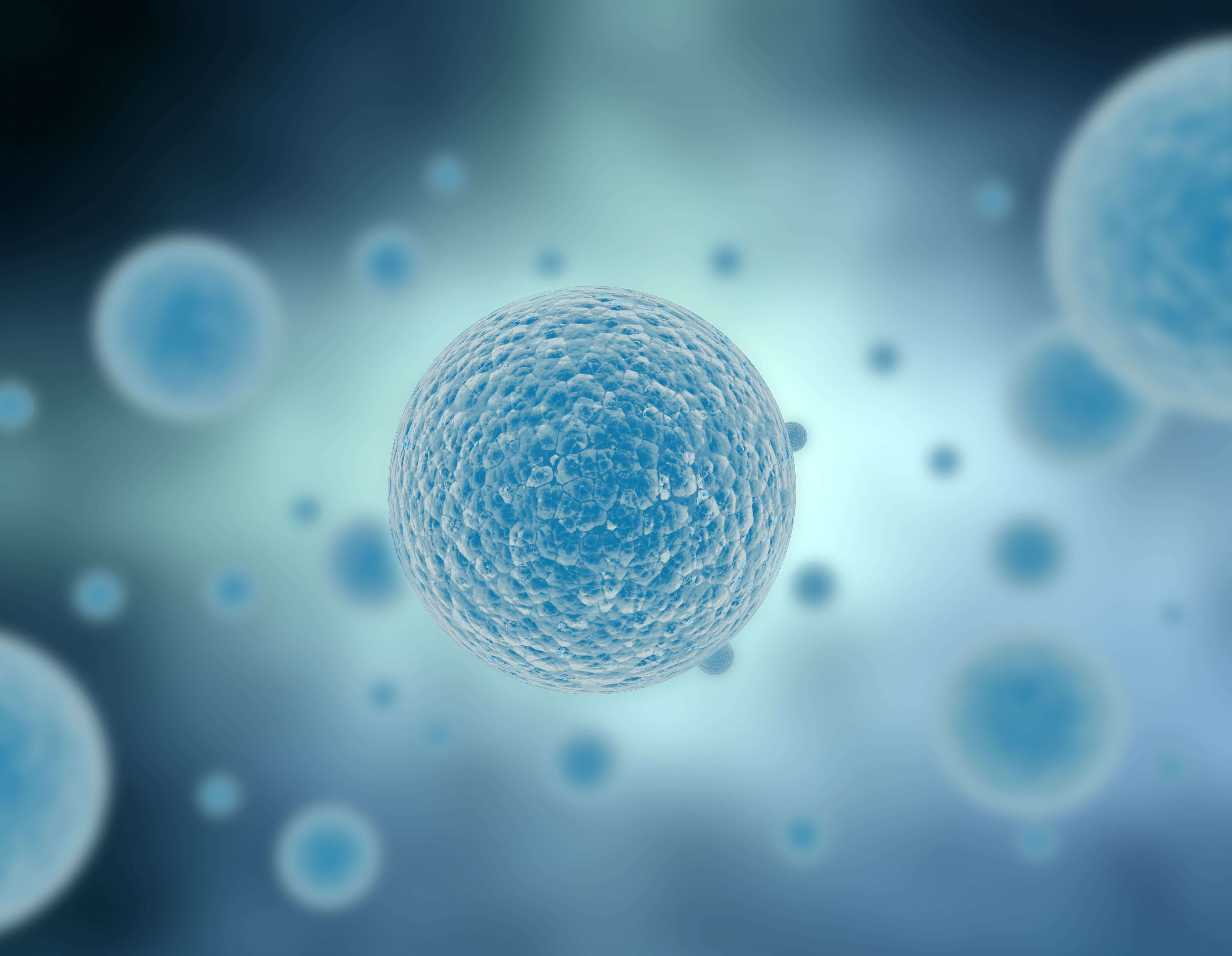Ultrahigh Resolution 21 T MALDI FT-ICR Mass Spectrometry Used for Single-Cell and Subcellular Analysis
A recent study analyzed individual hippocampal cells at ultrahigh mass resolution using a FT-ICR mass spectrometer.
Researchers from the University of Illinois at Urbana-Champaign in Urbana, Illinois, have made a significant advance in the field of mass spectrometry (MS) for single-cell research. In a study published in Analytical Chemistry, main author Jonathan V. Sweedler and his team utilized the resolving power of a 21 T Fourier transform ion cyclotron resonance (FT-ICR) mass spectrometer to analyze individual hippocampal cells at ultrahigh mass resolution (1).
Illustration of cells in blue | Image Credit: © Jezper - stock.adobe.com

21 T matrix-assisted laser desorption/ionization (MALDI) FT-ICR mass spectrometry is a powerful analytical technique used for high-resolution mass analysis of biomolecules such as lipids, peptides, and proteins. It is a combination of matrix-assisted laser desorption/ionization (MALDI) and FT-ICR mass spectrometry, which enables the analysis of single cells and subcellular structures with unprecedented accuracy and resolution. The high magnetic field strength of 21 Tesla allows for improved signal-to-noise (s/N) ratio and increased mass resolving power, making it possible to identify and quantify a wide range of biomolecules in small sample sizes. This technique has significant potential in the fields of neuroscience, cell biology, and clinical research.
The mammalian brain contains approximately 20,000 distinct lipid species that play an important role in the brain's structure and function. However, the vast chemical diversity of lipids combined with limited sample material makes comprehensive lipid profiling of individual cells difficult.
The researchers were able to differentiate freshly isolated and cultured hippocampal cell populations, as well as identify differences in lipids between the soma and neuronal processes of the same cell. The data collected from the ultrahigh resolution MS allowed for the accurate differentiation of these lipid species. The researchers observed TG 42:2 solely in the cell bodies and SM 34:1;O2 found only in the cellular processes.
TG 42:2 and SM 34:1;O2 are two types of lipids that play important roles in biological systems. TG 42:2 is a triglyceride that serves as a major energy source and is commonly found in adipose tissue and other lipid storage depots. SM 34:1;O2, on the other hand, is a sphingomyelin that contributes to membrane integrity and signaling, and it is abundant in cell membranes. These lipids have distinct structures, with TG 42:2 consisting of three fatty acid chains of 14 carbons each and SM 34:1;O2 consisting of a sphingosine backbone, a phosphorylcholine head group, and a fatty acid chain of 16 carbons with an oxygen atom in the 2 position. The characterization and quantification of these and other lipid species is essential for understanding lipid metabolism, lipid-related diseases, and the development of lipid-targeted therapies. Overall, TG 42:2 and SM 34:1;O2 represent important lipid species that play vital roles in cellular function and physiology.
This work represents a significant advance in the performance of mass spectrometry for single-cell research, particularly in the analysis of lipids. The use of ultrahigh resolution 21 T FTICR mass spectrometry provides an unprecedented level of accuracy and detail for single-cell and subcellular analysis. The researchers were able to gain a deeper understanding of the chemical composition of individual cells, which could lead to the development of new therapies for neurological disorders.
Overall, this research highlights the importance of using cutting-edge technologies in the field of biological research. By combining advancements in mass spectrometry with innovative research techniques, researchers can gain a deeper understanding of the complex processes occurring within individual cells.
Reference
(1) Castro, D. C.; Smith, K. W.; Norsworthy, M. D.; Rubakhin, S. S.; Weisbrod, C. R.; Hendrickson, C. L.; Sweedler, J. V. Single-Cell and Subcellular Analysis Using Ultrahigh Resolution 21 T MALDI FTICR Mass Spectrometry. Anal. Chem. 2023, ASAP. DOI: 10.1021/acs.analchem.3c00393
Study Explores Thin-Film Extraction of Biogenic Amines via HPLC-MS/MS
March 27th 2025Scientists from Tabriz University and the University of Tabriz explored cellulose acetate-UiO-66-COOH as an affordable coating sorbent for thin film extraction of biogenic amines from cheese and alcohol-free beverages using HPLC-MS/MS.
Quantifying Microplastics in Meconium Samples Using Pyrolysis–GC-MS
March 26th 2025Using pyrolysis-gas chromatography and mass spectrometry, scientists from Fudan University and the Putuo District Center for Disease Control and Prevention detected and quantified microplastics in newborn stool samples.






